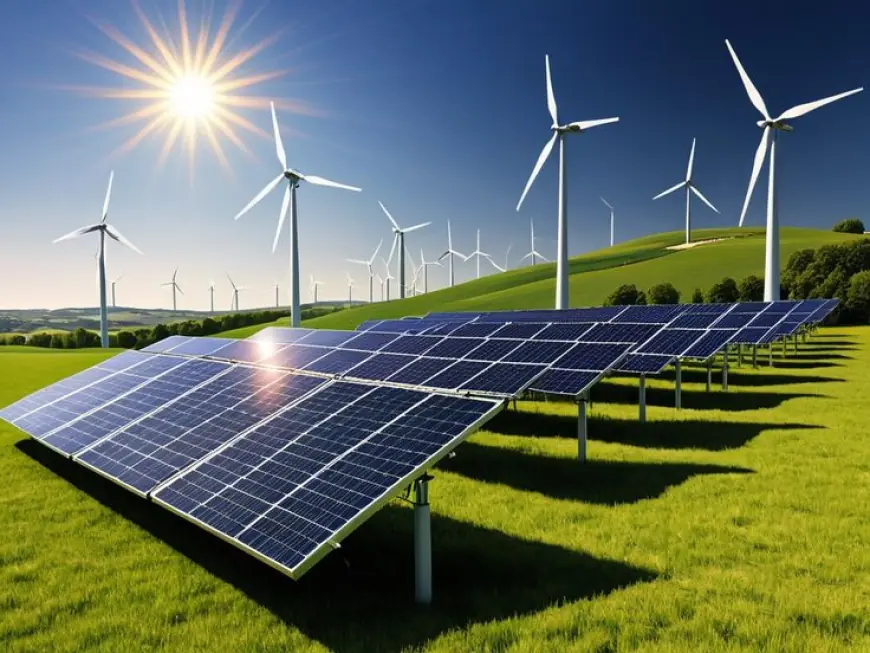Which Solar Panel Type Suits Your Home Energy Needs?

Switching to solar energy is one of the smartest decisions homeowners can make today. In Pakistan, the demand for reliable and efficient panels has significantly increased, with many people researching the best solar panels in Pakistan to ensure long-term savings and energy security. But with multiple types, technologies, and brands in the market, how do you choose the right one for your household? Here is a comprehensive guide to help you make an informed decision.
☀️ Understanding Solar Panel Types
Before selecting a panel, it is crucial to know the two main types available:
1. Monocrystalline Solar Panels
-
Appearance: Black, sleek, uniform colour
-
Efficiency: 18-22% (highest among panel types)
-
Space requirements: Produce more power in less space
-
Performance: Better in low-light conditions and high temperatures
-
Lifespan: 25 years+
Ideal for: Homes with limited roof space or those seeking maximum efficiency despite higher upfront costs.
2. Polycrystalline Solar Panels
-
Appearance: Blue with visible crystal patterns
-
Efficiency: 15-18%
-
Space requirements: Require slightly more space for the same output
-
Performance: Slightly lower output in high temperatures compared to monocrystalline
-
Lifespan: 20-25 years
Ideal for: Homeowners looking for cost-effective options with decent efficiency and ample roof space.
3. Thin-Film Solar Panels (Less Common for Homes)
-
Appearance: Thin, flexible, and lightweight
-
Efficiency: 10-12% (lower than crystalline types)
-
Space requirements: Require much more space
-
Performance: Performs well under shading and high temperatures
-
Lifespan: 10-15 years
Ideal for: Large-scale commercial projects or installations where weight is a concern (e.g. weak roofs).
? Factors to Consider When Choosing Panels
✅ 1. Roof Space and Orientation
Evaluate your roof size, shading, and structure direction. South-facing roofs with minimal shading provide maximum efficiency. If your roof is small, monocrystalline panels may be better due to higher output per square foot.
✅ 2. Budget
While monocrystalline panels cost more upfront, they often provide better ROI over time due to their higher efficiency and durability. Polycrystalline panels are more budget-friendly if you have enough roof space to accommodate extra panels for similar output.
✅ 3. Efficiency Ratings
Always check the efficiency rating of your chosen panel. A higher efficiency panel produces more power in limited space, which is crucial for urban homes with constrained rooftops.
✅ 4. Warranty and Lifespan
Most good quality panels come with a 25-year performance warranty. Ensure the manufacturer offers reliable after-sales support and that installers are certified to avoid warranty voiding.
✅ 5. Temperature Coefficient
In hot climates like Pakistan, panels with a lower temperature coefficient perform better. This means they lose less efficiency as temperature rises.
? Top Brands Popular in Pakistan
Some of the globally and locally trusted brands include:
-
JA Solar
-
Longi Solar
-
Canadian Solar
-
Trina Solar
-
Jinko Solar
These brands are known for their quality, efficiency, and reliable warranties, making them suitable for residential solar projects.
? Benefits of Choosing the Right Panel Type
✔ Reduced electricity bills by up to 80% with proper net metering
✔ Energy independence from rising utility costs
✔ Environment-friendly living, contributing to lower carbon emissions
✔ Increased property value due to solar installations being an attractive feature for future buyers
?? Professional Installation Matters
Even the highest quality panels will underperform if not installed correctly. Ensure:
-
Installers are certified and experienced
-
Systems are compliant with net metering regulations
-
Proper tilt and orientation are calculated for your location
This guarantees maximum efficiency and a safer, long-lasting system.
? Final Thoughts
Choosing the right solar panel type for your home depends on your energy needs, roof space, budget, and long-term goals. By understanding the differences between monocrystalline, polycrystalline, and thin-film panels, you can invest wisely and achieve the ultimate goal of reliable, clean, and affordable energy for years to come.
What's Your Reaction?
 Like
0
Like
0
 Dislike
0
Dislike
0
 Love
0
Love
0
 Funny
0
Funny
0
 Angry
0
Angry
0
 Sad
0
Sad
0
 Wow
0
Wow
0

















































